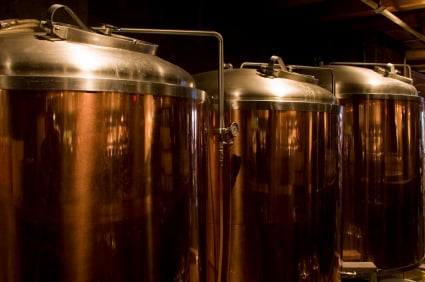
The Equipment profiles are used to store your personal equipment settings for building recipes. It is very important that you create your own personal equipment profile to use with BeerSmith. If you prefer, you can also watch this video on setting up an equipment profile.
Important Note!: Please take a few minutes to create your own equipment profile for your brewing setup. As the equipment profile is used throughout the recipe calculations, an accurate equipment profile is important particularly if you want accurate water calculations when brewing.
Using the Equipment Profile View
- Select the Equipment view from the profiles menu or ribbon
- From here you can add, edit or delete new equipment profiles using the large buttons on the ribbon
Creating an Equipment Profile of Your Own
- Select the Equipment view from the profiles menu or ribbon
- Click on the Add Equip button to add a new equipment profile, or you can copy/paste an existing profile and edit the copy to make it your own
- Details for the equipment profile dialog are shown below
- Press OK to save your equipment profile
- If you want to make your new equipment profile the default for all new recipes, use the Brewing tab in the Options dialog
Details of the Equipment Dialog – Setting up your own profile
- Name – Give your personal equipment profile a descriptive name
- Brewhouse Efficiency – If you are an all-grain or partial mash brewer, this should be set to the overall gross efficiency for your system from grain to fermenter including losses. For most brewing systems this is in the range of 68%-76%.
- Hop Utilization Factor – Should always be set to 100% unless you are working with a very large system (more than 20 gallons) in which case your utilization might be higher. Large commercial systems typically have numbers of 110%-150% depending on the system.
- Mash Tun Volume – The volume of your mash tun (for BIAB brewers, you should set this to the volume of your boil vessel).
- Mash Tun Weight – Approximate weight (mass) of your mash tun – used to compensate mash temperatures for the thermal mass of your tun
- Mash Tun Specific Heat – The specific heat of your mash tun – generally this is a number between 0.10 and 0.50 with lower numbers associated with all metal mash tuns such as stainless steel and higher numbers representing plastic thermal coolers.
- Lauter Tun Deadspace – Represents the deadspace in the lauter tun that is lost – how much wort will likely be lost to the lauter tun screen and piping and can’t be recovered during sparging.
- Mash Tun Addition – This number represents deadspace in the lauter tun that is recoverable during sparging. It is “extra” water added to the mash tun to compensate for this deadspace, but this water volume is recovered later during sparging.
- Top Up Water for Kettle – Enter zero here for most cases unless you add additional water between the mash and the boil
- Calculate Boil Volume Automatically – When checked this will determine the boil volume based on the Batch volume into the fermenter minus losses and evaporation. Generally it should be checked.
- Boil Volume – The volume of water at the start of the boil
- Boil Time – The time that you usually boil the wort – typically 60-90 minutes for an all grain batch or slightly less for an extract batch
- Boil Off – An estimate of the water boiled off or evaporated during the boil
- Evaporation Rate – Calculated from the boil off – this represents the percentage boiled/evaporated off during the boil
- Cooling Shrinkage – Water typically loses about 4% of its volume when cooled from boiling to room temperature
- Cooling Loss – Simply the cooling shrinkage expressed as a volume
- Losses to Trub/Chiller – The amount of wort lost in the trub or chiller during the transfer from the boiling vessel to the fermenter
- Top Up Water – Typically zero for a full boil batch, but many extract brewers do add a few gallons of water at the end of the boil
- Batch Volume Into Fermenter – The target batch size as measured into the fermenter – typically a bit over 5 gallons for most home brewers
- Fermentation Loss – Losses to trub and transfers during the fermentation process
- Bottling Volume – The batch volume minus fermentation losses – represents the volume of beer left to be bottled or kegged
New Feature: BeerSmith now has the brewhouse efficiency as part of the equipment profile making it easier to scale and match recipes based on recipe profiles. BeerSmith also now separates the “batch or into fermenter” volume (before fermentation) from the bottling volume (after fermentation).